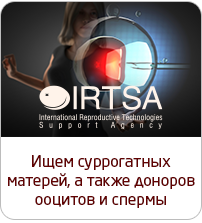Chances Skyrocket If Egg Is Injected With Sperm In Laboratory
Little wonder the procedure -- intracytoplasmic sperm injection, or ICSI -- is now the most widely used artificial reproductive technology (ART) in many developed countries, including Australia. "It's used in 60 to 70 per cent of IVF cycles," said IVF Australia's Peter Illingworth, president of the Fertility Society of Australia.
He pointed to data released last November by the National Perinatal Statistics Unit at the University of NSW in collaboration with the Australian Institute of Health and Welfare.
Using 2008 data, the NPSU found that ICSI was used in 63 per cent of IVF cycles, or treatments, up from 30 per cent in 1995, four years after it was developed by Gianpiero Palermo at the Centre for Reproductive Medicine and Infertility at the Free University of Brussels.
Associate Professor Illingworth cautioned, however, that the impact of various ART procedures remained uncertain and urged couples to start with conventional IVF, which is less invasive. But he welcomed the findings reported yesterday in the journal PLoS Medicine by epidemiologists Scott Nelson of the University of Glasgow and Debbie Lawlor with Bristol University.
They used the UK Human Fertilisation and Embryology Authority database to tease out the predictors of a live birth in all 144,018 IVF cycles undertaken in Britain between 2003 and 2007.
"Use of ICSI increased the odds of live birth," they reported, adding that 23.4 per cent of cycles resulted in at least one live birth.
According to professors Nelson and Lawlor, their findings about the couple- and treatment-specific factors associated with success or failure can help guide clinical decisions, as well as be used to counsel couples.
www.theaustralian.com.au
- The central office of IRTSA Ukraine completely restores work
- How we work during the COVID-19 pandemic
- 1st International Congress on Reproductive Law
- Soon Americans may face a new ethical dilemma
- ‘Friends’ star Jennifer Aniston is pregnant with twins
- Image processing technology can impact the success rates of ivf
- Editing genes of human embryos can became the next big thing in genetics
- Supermodel Tyra Banks undergoes IVF
- Scientists discovered a new, safer way for egg freezing
- French scientists have managed to grow human sperm cells in vitro









